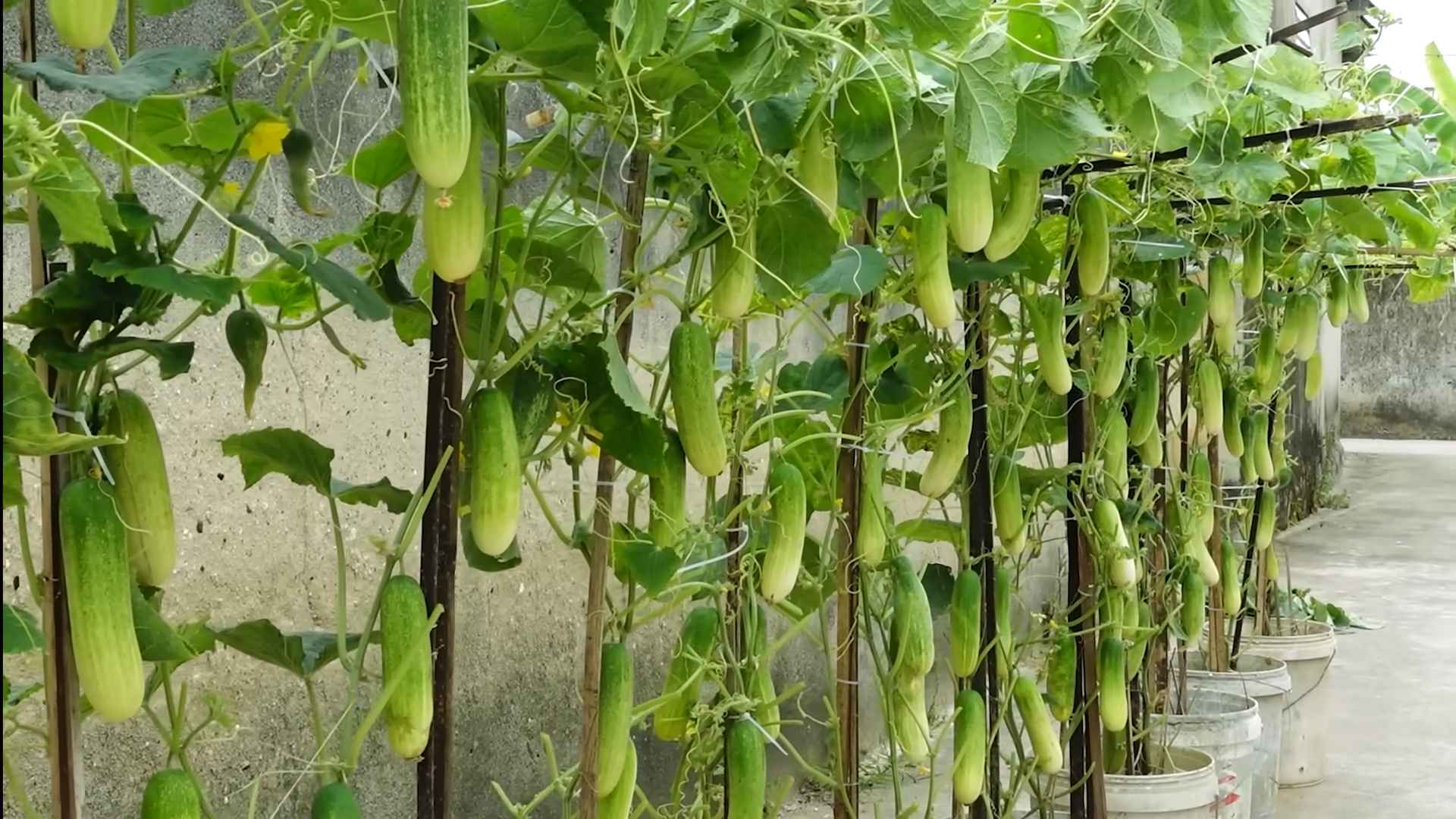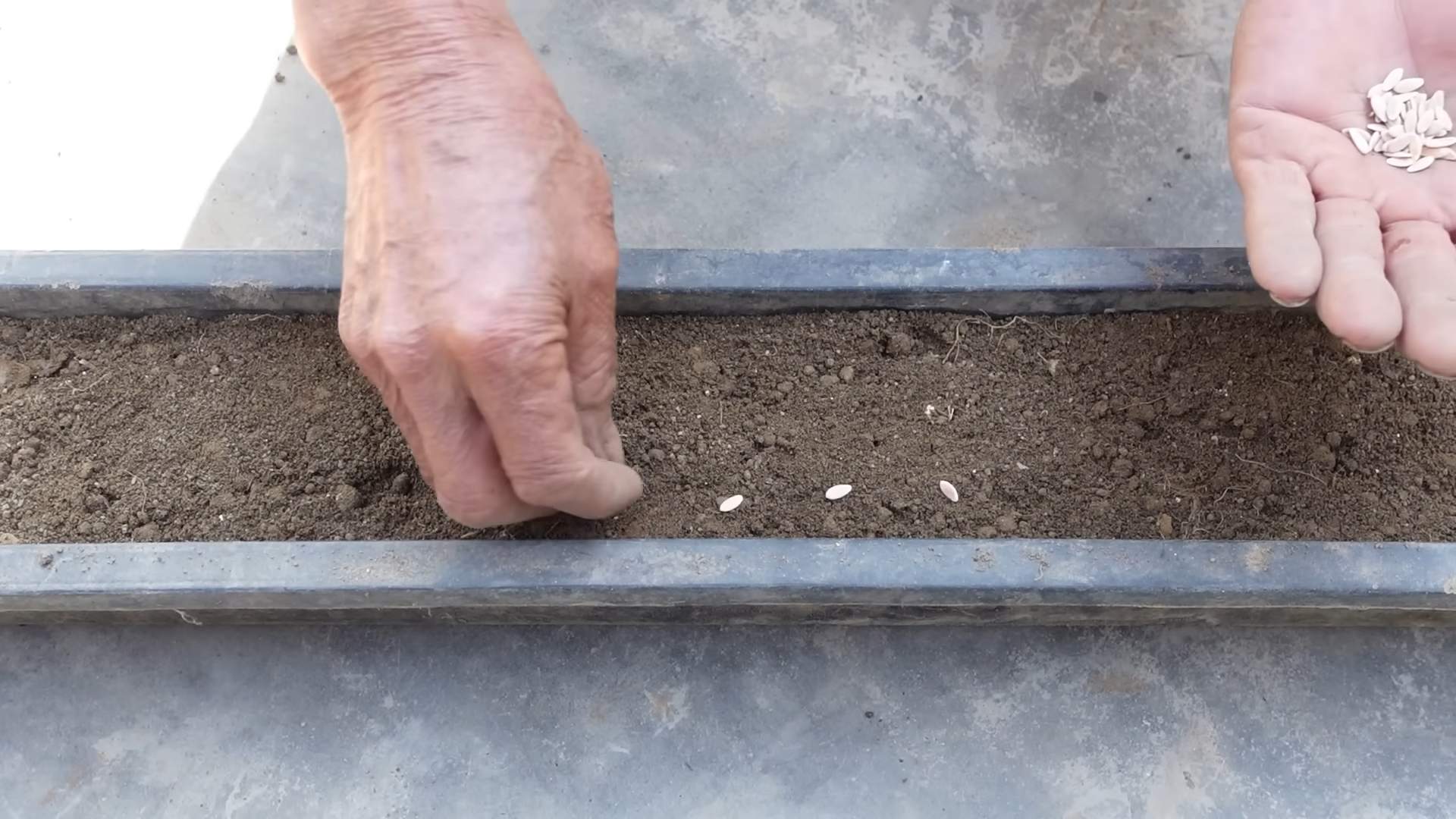Grow High Yield Cucumbers and transform your garden into a cucumber-producing powerhouse! Have you ever dreamed of harvesting baskets overflowing with crisp, juicy cucumbers, enough for salads, pickles, and sharing with neighbors? I know I have! It’s more achievable than you might think, and this DIY guide is packed with simple, effective tricks to help you maximize your cucumber yield.
Cucumbers have a rich history, dating back thousands of years to their origins in India. They’ve been cultivated and enjoyed across cultures, from ancient Rome to modern-day kitchens. But let’s be honest, sometimes getting a good harvest can feel like a battle against pests, diseases, and unpredictable weather. That’s where these DIY hacks come in!
Why do you need these tricks? Because store-bought cucumbers simply can’t compare to the taste and satisfaction of homegrown ones. Plus, knowing you’ve nurtured these delicious veggies from seed to harvest is incredibly rewarding. Whether you’re a seasoned gardener or just starting out, these tips will empower you to grow high yield cucumbers and enjoy a bountiful harvest all season long. Let’s dive in and unlock the secrets to cucumber success!

Grow High-Yield Cucumbers: My Secret DIY Guide
Hey there, fellow gardening enthusiasts! I’m so excited to share my tried-and-true method for growing a bumper crop of cucumbers. Forget those measly harvests – I’m talking about cucumbers coming out of your ears! This isn’t just about planting seeds; it’s about creating the perfect environment for these green beauties to thrive. So, grab your gardening gloves, and let’s get started!
Choosing the Right Cucumber Variety
Before we even think about soil, let’s talk varieties. Not all cucumbers are created equal! Some are better suited for slicing, others for pickling, and some are just all-around superstars.
* Slicing Cucumbers: These are your classic salad cucumbers. They have smooth, dark green skin and a mild flavor. ‘Marketmore 76’ and ‘Straight Eight’ are reliable choices.
* Pickling Cucumbers: These are shorter and stubbier, with bumpy skin. They’re perfect for making pickles that stay crisp. ‘National Pickling’ and ‘Boston Pickling’ are popular options.
* Burpless Cucumbers: If you’re sensitive to the burping effect some cucumbers can have, these are for you! They have thin skin and a mild flavor. ‘Sweet Slice’ and ‘Armenian’ (which is technically a melon, but grown like a cucumber) are great choices.
* Bush Varieties: If you’re short on space, look for bush varieties. They’re compact and perfect for containers. ‘Spacemaster’ and ‘Bush Champion’ are good options.
My Personal Recommendation: I’ve had amazing success with ‘Diva’ cucumbers. They’re burpless, disease-resistant, and produce tons of delicious, crisp cucumbers.
Preparing the Soil: The Foundation for Success
Cucumbers are heavy feeders, meaning they need a lot of nutrients to produce those abundant yields. So, soil preparation is absolutely crucial.
* Sunlight: Cucumbers need at least 6-8 hours of sunlight per day. Choose a location that gets plenty of sun.
* Soil Type: Cucumbers prefer well-drained, fertile soil with a pH between 6.0 and 7.0.
* Soil Amendment: This is where the magic happens! I like to amend my soil with plenty of organic matter, such as compost, well-rotted manure, and leaf mold. This improves drainage, adds nutrients, and helps retain moisture.
Step-by-Step Soil Preparation:
1. Clear the Area: Remove any weeds, rocks, or debris from the planting area.
2. Dig Deep: Dig down at least 12 inches. This loosens the soil and allows the cucumber roots to penetrate deeply.
3. Amend the Soil: Mix in a generous amount of compost, well-rotted manure, and leaf mold. I usually use a ratio of about 1 part organic matter to 2 parts soil.
4. Add Fertilizer: Incorporate a slow-release fertilizer specifically formulated for vegetables. Follow the instructions on the package. I like to use a fertilizer with a balanced NPK ratio (nitrogen, phosphorus, and potassium).
5. Rake Smooth: Rake the soil smooth and level.
Planting Your Cucumber Seeds or Seedlings
Now that the soil is prepped, it’s time to get those cucumbers in the ground!
* Starting Seeds Indoors (Optional): You can start cucumber seeds indoors about 3-4 weeks before the last expected frost. This gives them a head start and can result in an earlier harvest.
* Direct Sowing: You can also direct sow cucumber seeds directly into the garden after the last frost.
* Spacing: Space cucumber plants about 12-18 inches apart in rows that are 3-4 feet apart.
* Depth: Plant cucumber seeds about 1 inch deep.
Step-by-Step Planting Instructions:
1. Choose Your Method: Decide whether you’re starting seeds indoors or direct sowing.
2. Plant Seeds or Seedlings: If starting seeds indoors, transplant the seedlings into the garden after the last frost. If direct sowing, plant the seeds directly into the prepared soil.
3. Water Thoroughly: Water the newly planted seeds or seedlings thoroughly.
4. Mulch: Apply a layer of mulch around the plants to help retain moisture, suppress weeds, and regulate soil temperature. I like to use straw or shredded leaves.
Trellising: Vertical Gardening for Maximum Yield
Cucumbers are natural climbers, and trellising them is a game-changer for several reasons:
* Increased Air Circulation: Trellising allows for better air circulation, which helps prevent fungal diseases.
* Easier Harvesting: It’s much easier to harvest cucumbers when they’re hanging from a trellis.
* More Sunlight: Trellised cucumbers get more sunlight, which leads to higher yields.
* Space Saving: Trellising allows you to grow more cucumbers in a smaller space.
Types of Trellises:
* A-Frame Trellis: This is a simple and sturdy option that’s easy to build.
* Vertical Trellis: This is a good choice for smaller gardens.
* Cattle Panel Trellis: This is a strong and durable option that can support heavy cucumber vines.
Building a Simple A-Frame Trellis:
1. Gather Materials: You’ll need four wooden stakes (about 6 feet long), twine or wire, and a hammer.
2. Drive in Stakes: Drive two stakes into the ground about 3 feet apart, angled slightly inward. Repeat with the other two stakes, creating an A-frame shape.
3. Secure the Top: Tie the tops of the stakes together with twine or wire.
4. Add Horizontal Supports: Add horizontal supports every 12 inches or so, using twine or wire.
Training Your Cucumbers to Climb:
As your cucumber plants grow, gently guide the vines onto the trellis. You may need to tie them to the trellis with twine or plant clips.
Watering and Fertilizing: Keeping Your Cucumbers Happy
Cucumbers need consistent moisture and plenty of nutrients to thrive.
* Watering: Water deeply and regularly, especially during hot, dry weather. Aim for about 1 inch of water per week. Avoid overhead watering, as this can promote fungal diseases. Drip irrigation or soaker hoses are ideal.
* Fertilizing: Side-dress your cucumber plants with a balanced fertilizer every 2-3 weeks. You can also use a liquid fertilizer, such as fish emulsion or seaweed extract.
My Watering and Fertilizing Routine:
I water my cucumbers deeply every other day, or more often during hot weather. I also side-dress them with compost tea every two weeks. Compost tea is a fantastic organic fertilizer that’s easy to make.
Pest and Disease Control: Protecting Your Precious Crop
Cucumbers can be susceptible to a few pests and diseases, but with a little vigilance, you can keep them healthy.
* Common Pests: Cucumber beetles, squash bugs, aphids, and spider mites.
* Common Diseases: Powdery mildew, downy mildew, and bacterial wilt.
Organic Pest and Disease Control Methods:
* Handpicking: Pick off pests by hand and drop them into a bucket of soapy water.
* Insecticidal Soap: Spray plants with insecticidal soap to control aphids, spider mites, and other soft-bodied insects.
* Neem Oil: Neem oil is a natural insecticide and fungicide that can be used to control a wide range of pests and diseases.
* Companion Planting: Plant companion plants, such as marigolds and nasturtiums, to repel pests.
* Good Air Circulation: Ensure good air circulation around your plants to prevent fungal diseases.
* Remove Infected Leaves: Remove any infected leaves promptly to prevent the spread of disease.
My Go-To Pest Control Method:
I swear by neem oil! I spray my cucumber plants with neem oil every week or two as a preventative measure. It’s safe for beneficial insects and effective against a wide range of pests and diseases.
Harvesting: The Sweet Reward
Harvesting cucumbers at the right time is crucial for optimal flavor and texture.
* Harvest Time: Harvest cucumbers when they are the desired size and color. Slicing cucumbers are usually ready to harvest when they are about 6-8 inches long. Pickling cucumbers are ready when they are about 3-4 inches long.
* Harvesting Technique: Use a sharp knife or pruners to cut the cucumbers from the vine. Be careful not to damage the vine.
* Regular Harvesting: Harvest cucumbers regularly to encourage continued production.
My Harvesting Tips:
I check my cucumber plants every day during peak season. The more

Conclusion
So, there you have it! Mastering the art of growing high yield cucumbers isn’t about magic; it’s about understanding their needs and implementing a few strategic DIY tricks. We’ve explored how simple adjustments to your soil, watering techniques, and support systems can dramatically increase your cucumber harvest. Forget those meager yields of the past – with these methods, you’ll be swimming in cucumbers before you know it!
The beauty of these DIY approaches is their adaptability. Feel free to experiment with different compost combinations to find what works best for your local soil. If you’re short on space, consider vertical gardening techniques using trellises or even repurposed materials like old ladders. And don’t be afraid to get creative with your watering schedule, adjusting it based on the weather and the specific needs of your cucumber variety.
Why is this a must-try? Because it empowers you to take control of your garden and reap the rewards of your labor. Imagine the satisfaction of biting into a crisp, juicy cucumber that you nurtured from seed to harvest. Think of the delicious pickles, salads, and refreshing drinks you can create with your abundant supply. And consider the money you’ll save by reducing your reliance on store-bought produce.
But the real magic lies in the journey. Gardening is a learning process, and every season brings new challenges and opportunities. By embracing these DIY tricks, you’re not just growing cucumbers; you’re cultivating a deeper connection with nature and developing valuable skills that will benefit you for years to come.
Variations to consider:
* Companion Planting: Experiment with planting basil, marigolds, or nasturtiums near your cucumbers to deter pests and attract beneficial insects.
* Different Cucumber Varieties: Explore different cucumber varieties to find those best suited to your climate and taste preferences. Consider pickling cucumbers, slicing cucumbers, or even specialty varieties like lemon cucumbers.
* Hydroponics: For those with limited space or challenging soil conditions, consider growing cucumbers hydroponically. This method allows you to control the nutrient supply and environmental factors, leading to even higher yields.
* Seed Starting Indoors: Start your cucumber seeds indoors a few weeks before the last expected frost to get a head start on the growing season. This is especially beneficial in cooler climates.
We wholeheartedly encourage you to try these DIY tricks for growing high yield cucumbers. Don’t be intimidated by the prospect of gardening; it’s a rewarding and enjoyable experience for people of all skill levels. Start small, be patient, and don’t be afraid to make mistakes. Every failure is a learning opportunity.
And most importantly, we want to hear about your experiences! Share your successes, your challenges, and your own unique DIY tricks in the comments below. Let’s create a community of cucumber enthusiasts who are passionate about growing their own food and sharing their knowledge with others. Together, we can unlock the secrets to a bountiful cucumber harvest and enjoy the delicious rewards of our labor. So, grab your gardening gloves, get your hands dirty, and start growing those cucumbers!
Frequently Asked Questions (FAQ)
Q: How much sun do cucumbers really need to grow well?
A: Cucumbers are sun-loving plants and thrive with at least 6-8 hours of direct sunlight per day. Insufficient sunlight can lead to stunted growth, reduced yields, and increased susceptibility to diseases. If you live in a particularly hot climate, providing some afternoon shade can help prevent the plants from overheating.
Q: What’s the best type of soil for growing high yield cucumbers?
A: Cucumbers prefer well-drained, fertile soil that is rich in organic matter. The ideal soil pH is between 6.0 and 7.0. Before planting, amend your soil with compost, aged manure, or other organic materials to improve its structure, drainage, and nutrient content. Avoid heavy clay soils, as they can become waterlogged and suffocate the roots.
Q: How often should I water my cucumber plants?
A: Cucumbers need consistent moisture, especially during hot weather and fruit development. Water deeply and regularly, aiming to keep the soil consistently moist but not waterlogged. A good rule of thumb is to water every 2-3 days, or more frequently during periods of drought. Use a soaker hose or drip irrigation to deliver water directly to the roots, minimizing water loss through evaporation and reducing the risk of foliar diseases.
Q: What are the most common pests and diseases that affect cucumbers, and how can I prevent them?
A: Common cucumber pests include aphids, cucumber beetles, squash bugs, and spider mites. Diseases include powdery mildew, downy mildew, and bacterial wilt. To prevent these problems, practice good garden hygiene, such as removing plant debris and weeds. Use row covers to protect young plants from pests. Encourage beneficial insects, such as ladybugs and lacewings, which prey on aphids and other pests. Choose disease-resistant cucumber varieties. If necessary, use organic pesticides or fungicides as a last resort, following label instructions carefully.
Q: Do cucumbers need to be trellised, and if so, what’s the best way to do it?
A: Trellising cucumbers is highly recommended, as it improves air circulation, reduces the risk of diseases, and makes harvesting easier. There are several ways to trellis cucumbers, including using a traditional trellis, a fence, or even a simple A-frame structure made from bamboo poles. The key is to provide a sturdy support system that can handle the weight of the growing vines and developing fruits. Train the vines to climb the trellis by gently guiding them and tying them to the support structure as needed.
Q: How often should I fertilize my cucumber plants?
A: Cucumbers are heavy feeders and benefit from regular fertilization. Apply a balanced fertilizer (e.g., 10-10-10) at planting time and then side-dress with a nitrogen-rich fertilizer every 2-3 weeks during the growing season. Alternatively, you can use a liquid fertilizer, such as fish emulsion or seaweed extract, to feed your plants more frequently. Avoid over-fertilizing, as this can lead to excessive foliage growth and reduced fruit production.
Q: When is the best time to harvest cucumbers?
A: Cucumbers are typically ready to harvest 50-70 days after planting, depending on the variety. Harvest them when they are still young and tender, before they become overripe and bitter. The ideal size for harvesting depends on the variety, but generally, pickling cucumbers should be harvested when they are 2-4 inches long, while slicing cucumbers should be harvested when they are 6-8 inches long. Use a sharp knife or pruners to cut the cucumbers from the vine, leaving a short stem attached.
Q: Can I grow cucumbers in containers?
A: Yes, cucumbers can be grown successfully in containers, as long as you choose a large enough container (at least 5 gallons) and provide adequate support for the vines. Use a well-draining potting mix and water regularly. Choose bush or compact cucumber varieties, which are better suited for container gardening.
Q: How can I improve pollination for my cucumber plants?
A: Cucumbers rely on pollinators, such as bees, to produce fruit. To attract pollinators to your garden, plant flowers that are rich in nectar and pollen, such as sunflowers, zinnias, and lavender. Avoid using pesticides that can harm pollinators. If you’re not seeing enough bee activity, you can hand-pollinate your cucumber flowers by transferring pollen from the male flowers to the female flowers using a small brush.
Q: What are some good companion plants for cucumbers?
A: Companion planting can help improve the health and productivity of your cucumber plants. Good companion plants for cucumbers include basil, marigolds, nasturtiums, dill, and beans. These plants can help deter pests, attract beneficial insects, and improve soil fertility. Avoid planting cucumbers near aromatic herbs like sage, as they can inhibit cucumber growth.





Leave a Comment